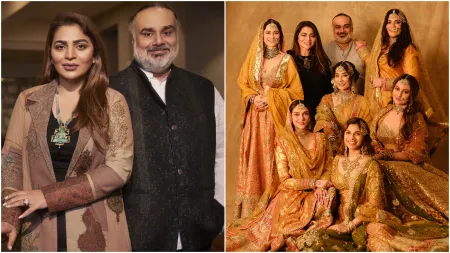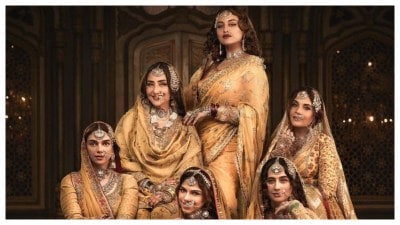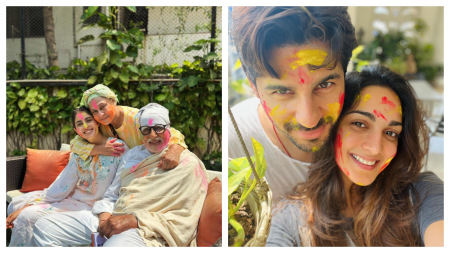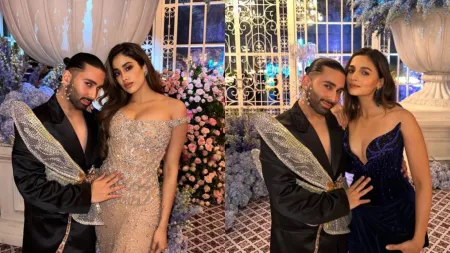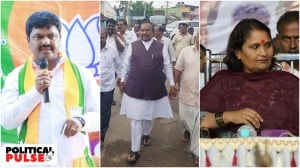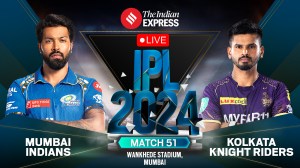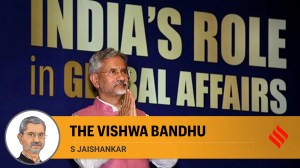- India
- International
Ramayan: Look at the show from the moral prism, not religious
Ramanand Sagar's Ramayan (1987) was an unprecedented landmark in the DD era. As the record-breaking epic is all set to be re-telecast from this morning, here's rewinding to the time when Lord Ram's morality tale brought India to a standstill.
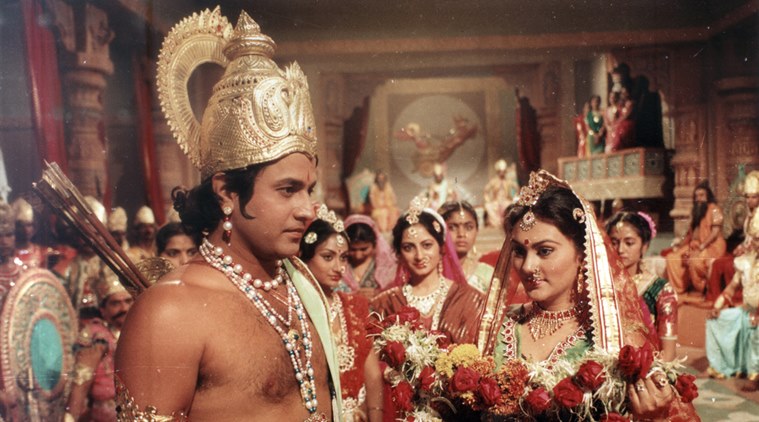 Arun Govil and Dipika Chikhalia in Ramayan. (Express archive photo)
Arun Govil and Dipika Chikhalia in Ramayan. (Express archive photo)
Ramanand Sagar’s iconic Ramayan first premiered on Doordarshan in 1987, after which, as they say, Indian television wasn’t quite the same. In his tweet on March 26, I&B minister Prakash Javadekar, while dropping the Ramayan doozy, gave no other reason for the re-telecast except “public demand.” The mythological epic, it is hoped, will once again entertain and enlighten 1.3 billion Indians who are at home, due to coronavirus lockdown. Needless to say, the government expects to recreate the original’s magic. The TV series was a divine rage in its time. “Hugely popular” doesn’t even begin to cover it. An unprecedented epic, no less than an event, Ramayan was watched by millions of viewers throughout India cutting across religion, caste and social strata earning it a spot in record books. Those were the times when few households owned a TV set, and yet, that never stopped viewership from bulging in other (uniquely Indian) ways. The Ramayan revival is also a reminder of the good ol’ days when family members and prying neighbours would gather around the TV for their weekend fix. Jaidev’s signature theme tune played in the opening title against Lord Ram’s archery pose seldom failed to hook the audiences. They knew the previous episodes by heart and would wait anxiously for the new ones. At the peak of its popularity, Ramayan had the spiritual energy to bring the entire nation to a standstill. The story of the morally upright Ram and the sacrificial Sita along with the adventures of Hanuman thrown in for good measure are familiar to most Indians and has long enriched our vision of the world as well as our culture and art — via the religious texts, ubiquitous Ram Leelas and many oral retellings. The epic is open source. A daily ritual more than a mere classic. So, what made the Sagar-helmed Ramayan so special? What explains its enduring appeal over the decades?
Hail the ideal king
A simple answer is that Indians could relate to Ramayan, but to see the insides of the godly royal courts, elaborate costumes and ornaments, forests and battle scenes, monkey armies, the miracles, boons and curses, the saints and sages, your favourite god’s personal tribulation.. all this unspooling on your friendly TV set was entirely new. Part of the show’s appeal lies in its fresh casting and the way Sagar presented the mythological epic in a folkloric style. In its 78 episodes, writer-director Sagar traces the life of Lord Ram, Dasharatha’s favourite son who must save his kidnapped wife Sita from demon Ravana and along the way, teach us mere mortals important morals and life wisdoms. Ram, the most ideal and virtuous man and king who must lead human race to the right path and establish Karma and Dharma, referred to in the Hindu pantheon as one of the avatars of Vishnu himself, was played by Arun Govil while his beloved wife and soulmate Sita who suffers in silence and yet, emerges as Ram’s true equal by the end, was brought to life by Dipika Chikhalia. One of the masterstrokes was to convince the legendary Dara Singh to play Hanuman, Lord Ram’s faithful devotee. He can tear his heart to reveal his love for the divine couple. Ramayan changed Dara Singh’s life, but according to his biography, the He-Man had originally turned down the iconic role. Touching 60 by then, Singh requested Sagar to find a younger actor. “You are Hanuman. You are the best,” an adamant Sagar apparently replied. The rest is history. Govil and Chikhalia got so badly typecast as Ram and Sita that they could never emerge out of Ramayan’s divine shadow —an albatross they were unable to shake off all their lives. Young and talented, Chikhalia’s film career never took off. The DD-era audiences can recall her cameo in the popular Nirma ad. Govil, on the other hand, was much more vocal about his disenchantment. He went on to call Ramayan a career suicide. In a heart-to-heart with The Times Of India, the actor revealed that though the show earned him much love and adulation, “For the last 14 years, I have not done anything, except maybe make a few special appearances. Post Ramayan, when I wanted to return to Bollywood, the producers said, ‘Your image as Ram is so strong, we cannot cast you as anyone else or give you a supporting role.’ That became the biggest minus point of my career.”
Can it hold modern audiences?
More than three decades later, the world has changed. The Ramayan rerun arrives at a time when India is quarantined but has cornucopia of content to pick from, thanks to the unlimited options online and on TV. It would be interesting to see what reaction the landmark TV series gets in the age of Instagram and Smartphones. Those who came of age in the 1980s and 90s will no doubt tune in this morning to amp up some excitement, perhaps for nostalgia’s sake? Like with any show from that time, there’s likelihood that the special effects and melodramatic histrionics might feel a tad dated, especially to the young audience. The late Ramanand Sagar’s son Prem Sagar feels good content is the “soul of any show. Besides, “Ramayan is perennial. It will always be new,” he told a newspaper, ahead of the first telecast at 9 am today. Already on Twitter and Facebook, the show’s revival has sharply divided audiences. In the post-Babri India, anything to do with Lord Ram is looked upon with suspicion from one perspective and cheered with hooting from another. Expectedly, minutes after the Ramayan announcement was made by Javadekar, social Media went into a frenzy. Some greeted Ramayan’s comeback with chants of “Jai Shri Ram” while so-called liberals and Modi-haters scoffed at the news, dismissing it as yet another “Hindutva conspiracy.” Still others complained why no Mahabharata, Chanakya, Buniyad, Hum Log, Nukkad and all the other gems from 1980-90s Doordarshan. One disgruntled Twitter user, no doubt a caring parent, carped that the government must not exclude children and suggested a Shaktiman rerun. Who knows, perhaps, in the coming weeks we might see DD classics raining.
Also Read | Dipika Chikhlia on Ramayan rerun: I don’t know if people will have the patience for it

Keep politics aside for a moment. Try to view the series from a moral prism, not religious. “A mythological narrative like a Ramayan or a Mahabharata,” wrote mythologist Devdutt Pattanaik, “is primarily aimed to communicate the spiritual truth, even though it does have some proportion of social truth in it.” Ramayan has plenty of both. In it lies the memories and nostalgia of millions of Indians. If you are willing to see it as the moral tale of good versus evil that is fundamentally at its core and Ram and Sita’s golden lessons about truth, moral dilemma, faith, penance, endurance, relationships and even politics, then the show that moved so many back in the day might have a little something for you, too. Give it a shot.
Photos
May 03: Latest News
- 01
- 02
- 03
- 04
- 05









